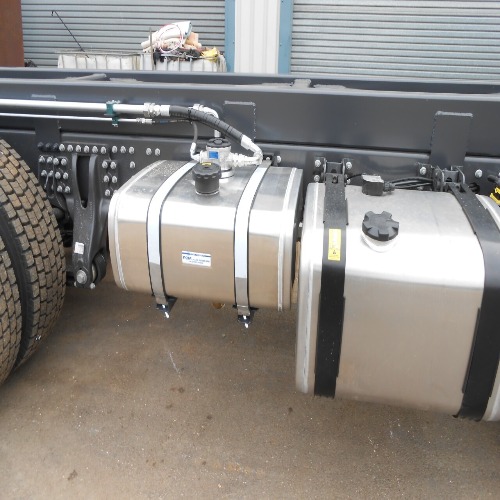Call us on +44 (0)1327 842808 |
Published on 30 May 2022
When it comes to purchasing a hydraulic oil reservoir tank, there are a few things you need to consider. Do you want a steel tank or an aluminium tank? What size do you need? And what are the advantages and disadvantages of each type of tank? In this post, we’ll take a look at the pros and cons of both steel and aluminium tanks, so you can make an informed decision to best suit your needs.

When it comes to hydraulic oil tanks, there are a few key factors you’ll want to consider: strength, weight, and price.
Steel tanks are stronger and heavier than aluminium tanks, making them better suited for applications in which high pressure or impact is likely, for example industrial or agricultural settings.
So, ultimately, the choice between steel and aluminium hydraulic oil tanks depends on your specific needs and budget.
There is no simple answer as to which is the better choice as this will depend largely on your individual needs. Both steel and aluminium have their pros and cons when it comes to hydraulic oil tanks and these will need to be taken into account when making your purchase.
Let’s start with Steel. Steel is obviously very strong, so it can definitely handle the pressure of holding hydraulic fluid. It’s also inexpensive, which is always a bonus. However, steel tanks can be susceptible to corrosion over time and may need to be replaced more frequently, particularly if they’re not properly maintained.
On the other hand, aluminium tanks are much lighter than their steel counterparts, so they’re easier to transport and install. Weight saving is incredibly important within the transport and commercial vehicle sector. They’re also less likely to corrode, which is a big plus. However, they are more expensive than steel tanks and not as durable.
Once you have decided on material, before buying a hydraulic oil reservoir, it’s important to understand a few key things about them. Here are the most important aspects to keep in mind:
Capacity – The capacity of a hydraulic oil reservoir is how much oil it can hold. This is important to consider because you want to make sure the reservoir can hold enough oil to meet the needs of your system.
Size – The size of a hydraulic oil reservoir is also important to consider. You want to make sure the reservoir will fit comfortably in your system and that it isn’t too large or too small.
The 10% Rule – You rely on your reservoir to maintain a supply of fluid in addition to what is used by the system. To help your system run more efficiently, purchase a reservoir with 10% more capacity than the minimum requirement. The reservoir should be about two and a half times the pump output per minute as a rule of thumb.
Consider the Coating – Inquire about the tank’s protection against the elements. Galvanised steel or durable powder coat paint can help prevent rust due to weather conditions.
Invest in a Filter – Inline or internal filters are commonly available to purchase along with your tank. It is recommended that you invest in one of these to keep your tank in better condition for longer. It’s a small price to pay for greater efficiency and peace of mind.
So, what’s the verdict? Should you go for a steel or aluminium hydraulic oil tank? Ultimately, it comes down to your specific needs and preferences. Steel tanks have some clear advantages – they’re more durable, can withstand high temperatures and are cheaper than aluminium tanks. However, if weight is an issue or you need your tank to be corrosion-resistant, then aluminium is the better option. If you still can’t decide which type of tank is best for you, don’t worry, at PCM Handling we offer both steel and aluminium tanks in a range of sizes to suit all your requirements. Contact us today for more information or a quote for your new hydraulic oil tank.
Fill in the form below and a member of the team will be in touch with you shortly.
© 2025 PCM Transport and Handling
Web Design and Marketing by Loop Digital